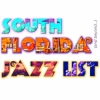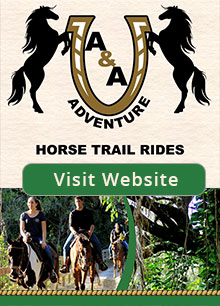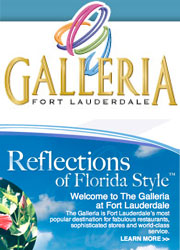Fort Lauderdale loves tourists. And tourists – some 10 million a year – apparently love the area.
Dining? It's here. Shopping? In abundance.
Fishing and boating? Another moniker for this city – with hundreds of miles of inland waterways in addition to the Atlantic Ocean – is the Venice of America.
It's also a center for sea cruises, and home port to the biggest cruise ship in the world. Nearby, there's casino gambling; the wildness of the Everglades; pro sports with the Dolphins, Heat, Marlins and Panthers; the oh-so-trendy South Beach; and the posh of Palm Beach. And, of course, there's the beach.
That's all grand. Millions of visitors can't be wrong.
But some of the multitudes of tourists, and some of the local residents, too, at times can find themselves hankering for something a little different – something just off the beaten path that offers a respite from the intense fun and sun. Maybe something with local history.
Here are a few places, all within minutes and often within walking distance of downtown Fort Lauderdale, to grab a quiet moment – some sweet, sedate spots for when you might want to get away from getting away from it all.
Riverwalk Linear Park Photo Credit: Peter W. Cross for VISITFLORIDA.com
Photo Credit: Peter W. Cross for VISITFLORIDA.com
This really is a walk in the park, along a red-brick pathway hidden in plain sight in the heart of Fort Lauderdale.
From any point along Riverwalk, stretching about a mile along the north side of the New River, you can access the teeming pulse of the city.
But equally enticing, just enjoy the hideaway.
Starting from the west end, you have Cooley's Landing marina, with a small park ideal for a picnic. Eastward past the towering condos, it's a short jaunt to the Broward Center for the Performing Arts, the Museum of Discovery and Science and the Florida Grand Opera. And there's Esplanade Park, where the first Sunday of every month brings the area's best local jazz artists for free outdoor concerts from 11 a.m. to 2 p.m.
A bit farther east and you're in the historic district, with the Fort Lauderdale Historical Society, several old homes and, as you wish, the hopping restaurants and bars of old Himmarshee Village just north.
Over the railroad tracks is Las Olas Riverfront, which the city hopes to revitalize, then the green swath that is Huizenga Park and a block away the Museum of Art.
Past the Third Avenue Bridge you'll find entry to the shopping and nightlife of Las Olas Boulevard, and a few hundred yards from the end of the path is the Stranahan House Museum, where much of Fort Lauderdale's history begins.
All those attractions are worth experiencing. But just strolling the Riverwalk itself is a calming, cool diversion that won't cost you a thing. Even surrounded by the city, this is a path to take time out, a place to hear the birds, watch splashing fish.
If you like drawbridges, this route boasts three, with rare views from underneath. From your vantage point, you can gloat that it's not you stopped in traffic above.
Benches dot the entire stretch, perfect spots to relax and soak in the tableau of boats and yachts bobbing at the docks or glittering past to adventures unknown. You can join them if you wish: At several locations along the way, a water taxi can be hailed to take you to points along the city's waterways.
Details: Get to Riverwalk Linear Park from any spot in downtown Fort Lauderdale just by walking to the New River. It's open 24 hours a day, 7 days a week, and features water frontage, gazebos, a lighted walkway, picnic areas and restrooms.
Annie Beck Park Photo Credit: Peter W. Cross for VISITFLORIDA.com
Photo Credit: Peter W. Cross for VISITFLORIDA.com
Annie Beck is a ribbon of land tucked between Victoria Park Road and a finger canal, both lined with some of the city's more historic – and expensive – homes.
Start just to the south at Victoria Park, with a gazebo and more than an acre of green lawn with sun and shade. It's a great place to launch a kayak to explore the latticework of nearby waterways.
Just across Northeast First Street is the adjoining Annie Beck Park, no more than a dozen feet wide in most places, almost a tunnel through a canopy of gumbo limbos, live oaks and silver trumpets, a cool escape even in the summer months.
On the west side, explore a high limestone ridge, traveled in the old days by wagons headed to the ferry on the New River. Today, cars whiz by overhead on Victoria Park Road, but you hardly hear it. This is Old Fort Lauderdale, where songbirds trill overhead and the fish and wading fowl feed in the mangroves and sea grapes to the east.
The park is named for Annie Beck, wife of Albert J. “Doc” Beck, a druggist who moved to Fort Lauderdale in December 1916. Annie, who joined him from Ocala in 1919, formed a library in her home in 1938, was President of the Fort Lauderdale Woman's Club and helped the city bring its greenery back to life after the 1926 hurricane.
She'd love this little green getaway.
Details: From downtown Fort Lauderdale, head north to Broward Boulevard then east until it ends at Victoria Park. Annie Beck Park is open from 8 a.m. to 9 p.m., and it's free.
Colee Hammock Park Photo Credit: Peter W. Cross for VISITFLORIDA.com
Photo Credit: Peter W. Cross for VISITFLORIDA.com
Colee Hammock was the site of the first white settlement on the New River and, in 1836, a murder scene.
Local Native Americans, the story goes, were outraged that magistrate William Cooley failed to convict the killers of Creek Indian Chief Alibama. While the men were away salvaging a shipwreck, the Indians attacked the settlement and murdered the women and children.
The killings came during the Second Seminole War, one of several conflicts between Florida's Native Americans and the U.S. government, which wanted to move them to reservations west of the Mississippi River.
The site, a park since 1934, is peaceful today, a favorite lunch spot for the downtown office crowd.
Benches are a fine spot for a soda and a sandwich, beneath the shade of live oaks, palms and a giant strangler fig. Expect the squirrels and pigeons to beg for a bite.
The edges of the park are ringed with native plants designed to attract birds and butterflies.
The view is stupendous – boats of all sizes and stripes, gliding past a panoramic background of colorful waterfront mansions, sitting pretty across the north fork of the New River.
Behind the park is First Presbyterian Church, celebrating more than 100 years of existence and Florida architecture well worth a look.
Details: From downtown, walk east along Las Olas Boulevard to Southeast 15th Avenue and head south two blocks to Brickell Avenue and the park. The park's features include water frontage, fishing and a picnic area.
Hugh Taylor Birch State Park
Hugh Taylor Birch didn't like crowds. Thanks to him, you can escape them too.
This Chicago lawyer for Standard Oil was getting away from the crowds at the 1892 World's Fair when he traveled by rail to the end of the line in Titusville, then rented a sailboat to take farther down the Atlantic Coast. When a storm forced him to shore near here, he was smitten by the area's rawness, beauty – and isolation.
Birch bought three miles of barrier island between what is now the Intracoastal Waterway and Fort Lauderdale Beach in 1893 for less than $1 per acre and built a winter homestead. Much later, hoping to preserve a quiet spot amid growing development, Birch deeded his getaway to the public.
Now, just a quick walk from the shops and condos that dominate the beach and A1A, these 180 acres, as they did for Birch, provide a green oasis from the cacophony.
 Photo Credit: Peter W. Cross for VISITFLORIDA.com Rent a canoe to paddle a mile-long freshwater lagoon, or fish from the seawall on the west side, which also features picnic areas and wondrous views of the fancy homes and businesses across the water.
Photo Credit: Peter W. Cross for VISITFLORIDA.com Rent a canoe to paddle a mile-long freshwater lagoon, or fish from the seawall on the west side, which also features picnic areas and wondrous views of the fancy homes and businesses across the water.
Two short nature trails offer a look at what Florida's coastline looked like (minus the bears, panthers and deer) before civilization sprang up. It's still plenty wild enough for mosquitoes, though, so bring bug repellant.
The Terramar Visitor Center in Birch's old house is due for a restoration soon, but currently offers displays about the area's natural history – and a sizable collection of snakes. Nearby is a concession where you can rent bikes, skates or a Segway to tool the peaceful two miles of paved road that circle the park. When you're ready for the beach again, get there handily through the pedestrian tunnel under A1A.
Or just walk around and look – the park claims over 500 species of plants and 200 species of birds – and thank Hugh Taylor Birch.
Details: From downtown Fort Lauderdale, take Las Olas Boulevard east to A1A, head north to Sunrise Boulevard and turn left. The park entrance is on your right. Admission is $4 per vehicle, $1 for walk-ins. Hours are 8 a.m. until sundown, 365 days a year. Call 954-564-4521 for more information.
 Photo Credit: Peter W. Cross for VISITFLORIDA.com Bonnet House
Photo Credit: Peter W. Cross for VISITFLORIDA.com Bonnet House
Just a hop and a skip south of Hugh Taylor Birch State Park presides the Bonnet House Museum and Gardens.
A shell midden suggests the Tequesta Indians were active here more than 2,000 years ago. Archaeology also indicates this was a New World landing for Spanish explorers. Who says South Florida has no history?
The modern chapter begins in 1919, when Birch gifted these 30 acres, once part of what is now Birch State Park, to his daughter Helen and her husband, Chicago artist Frederic Clay Bartlett.
The newlyweds began building Bonnet House in 1920 as a winter retreat for Frederic to paint and Helen to compose music and poetry. Alas, Helen died five years later of breast cancer. Frederic rarely visited again until 1931, when he married Evelyn Fortune Lilly, and then Bonnet House came to life again.
Frederic died in 1953, but Evelyn returned each winter and, in 1983, gave Bonnet House to the Florida Trust for Historic Preservation. Her contribution – at the time the largest charitable gift in Florida history – ensured the site would be preserved for the enjoyment of future generations.
There's much to enjoy.
The house is Frederic's idea of a Caribbean plantation, fitting easily into the subtropical environment and featuring numerous living spaces, both indoors and out. Throughout the home, studio and gallery are examples of his art and murals – plus those of Evelyn, whose talents Fredric boasted were his greatest discovery. All the furnishings – odd, elegant and from all over the world – are original to the estate.
The grounds represent one of the last examples of a native barrier island habitat in South Florida, with beach dunes, a freshwater slough (with two graceful swans and the bonnet lilies that give this place its name), mangrove wetlands and a maritime forest.
Evelyn's orchids, hundreds of them, are still here, brilliant in the greenhouse that adjoins the building holding the couple's shell collection and a bamboo bar where guests were entertained.
A walk around or a $2 golf cart tour takes you past a jungle of greenery – ear trees, cardboard palms, plumbago, jacaranda, rose apples, mangos, mahogany, sapodilla, lime trees and more. Keep an eye out; you might catch a glimpse of the Brazilian squirrel monkeys that live here.
Frequently, the home and grounds serve as a backdrop for photo shoots and weddings.
Details: Take Sunrise Boulevard eastward, almost to A1A and turn right onto North Birch Road. Follow the road to the dead end and make a left into the parking lot. Call 954-563-5393 for additional details. Hours are 10 a.m. to 4 p.m. Tuesday through Saturday and 11 a.m. to 4 p.m. Sunday. Admission is $20 per person, $18 for seniors, $16 for children six to 12 and free for children under six. Admission for the grounds only without the house tour is $10.
Philip Ward, editor of FortLauderdaleConnex.com, formerly was a reporter, editor and manager at the Miami Herald and the Fort Lauderdale Sun-Sentinel. He wrote this article for VisitFlorida.com





















